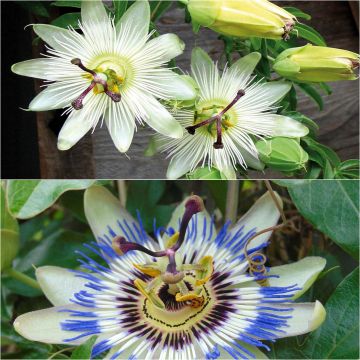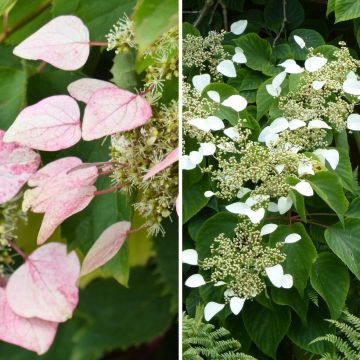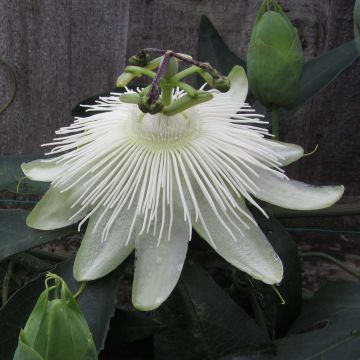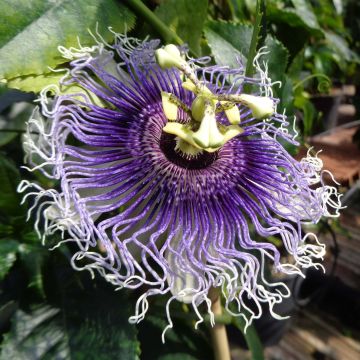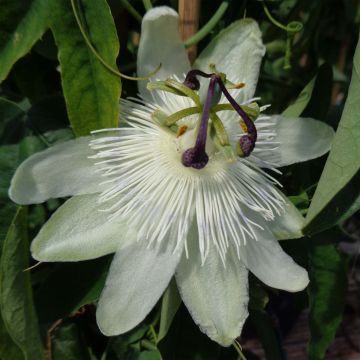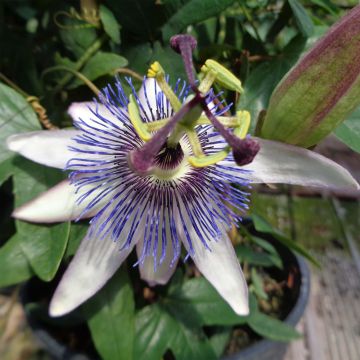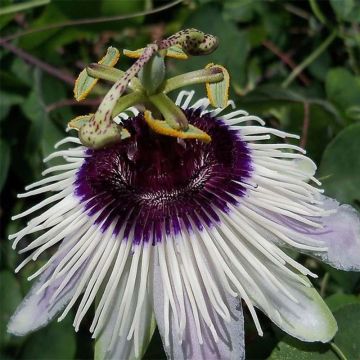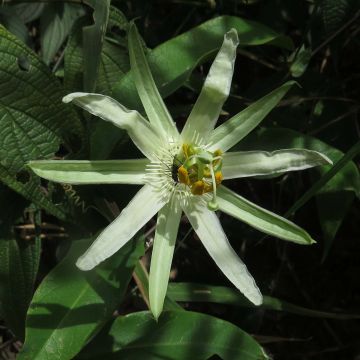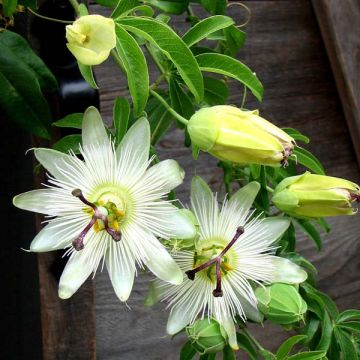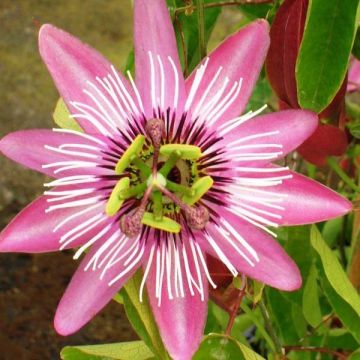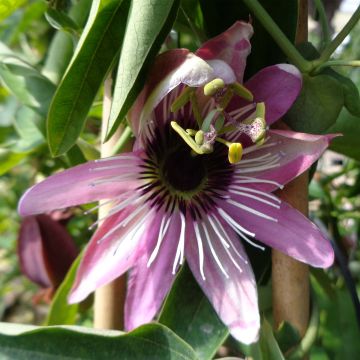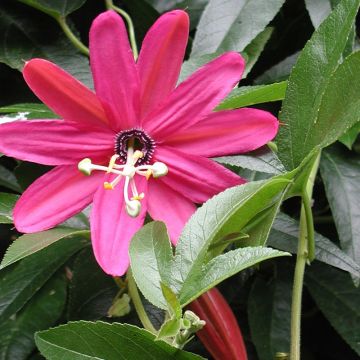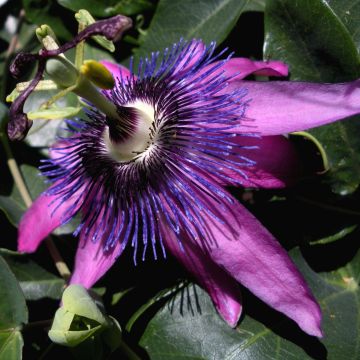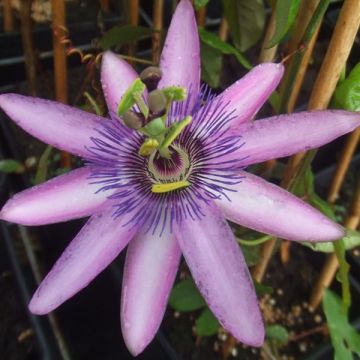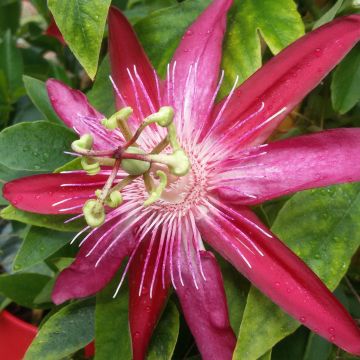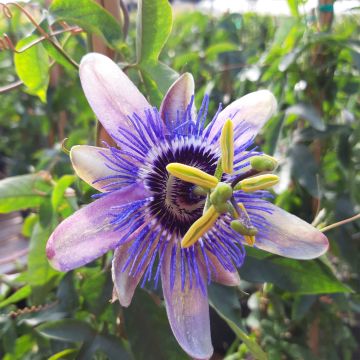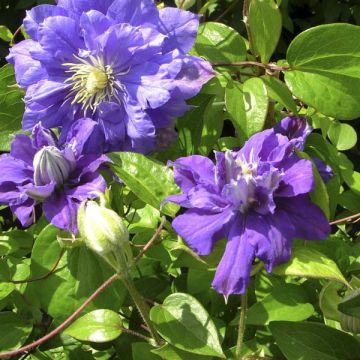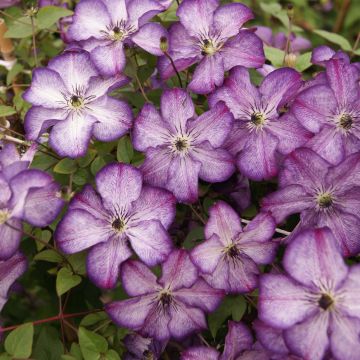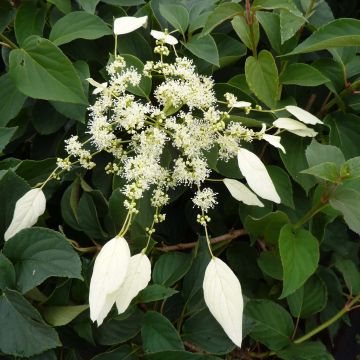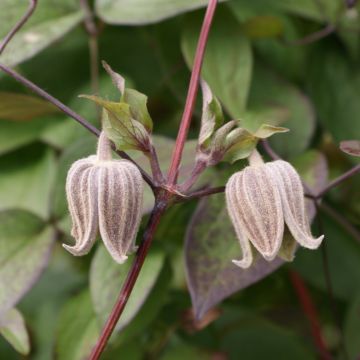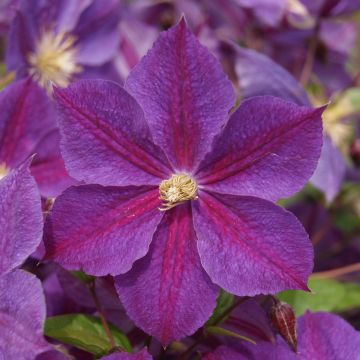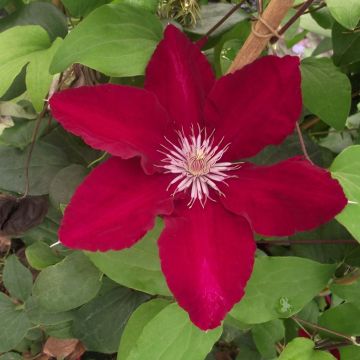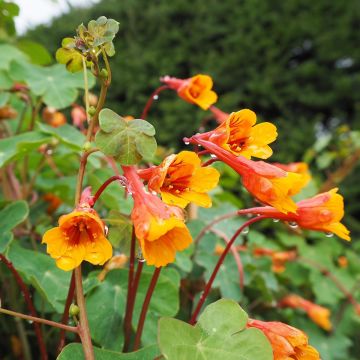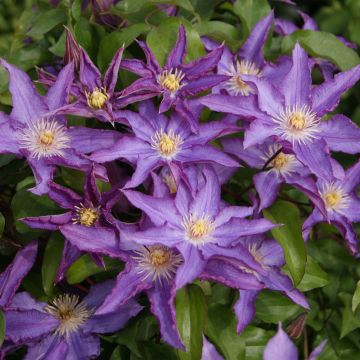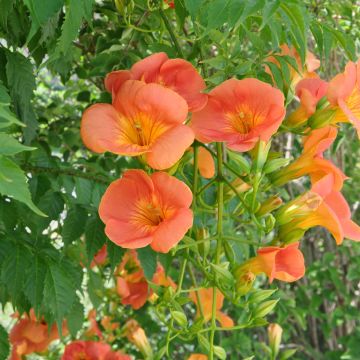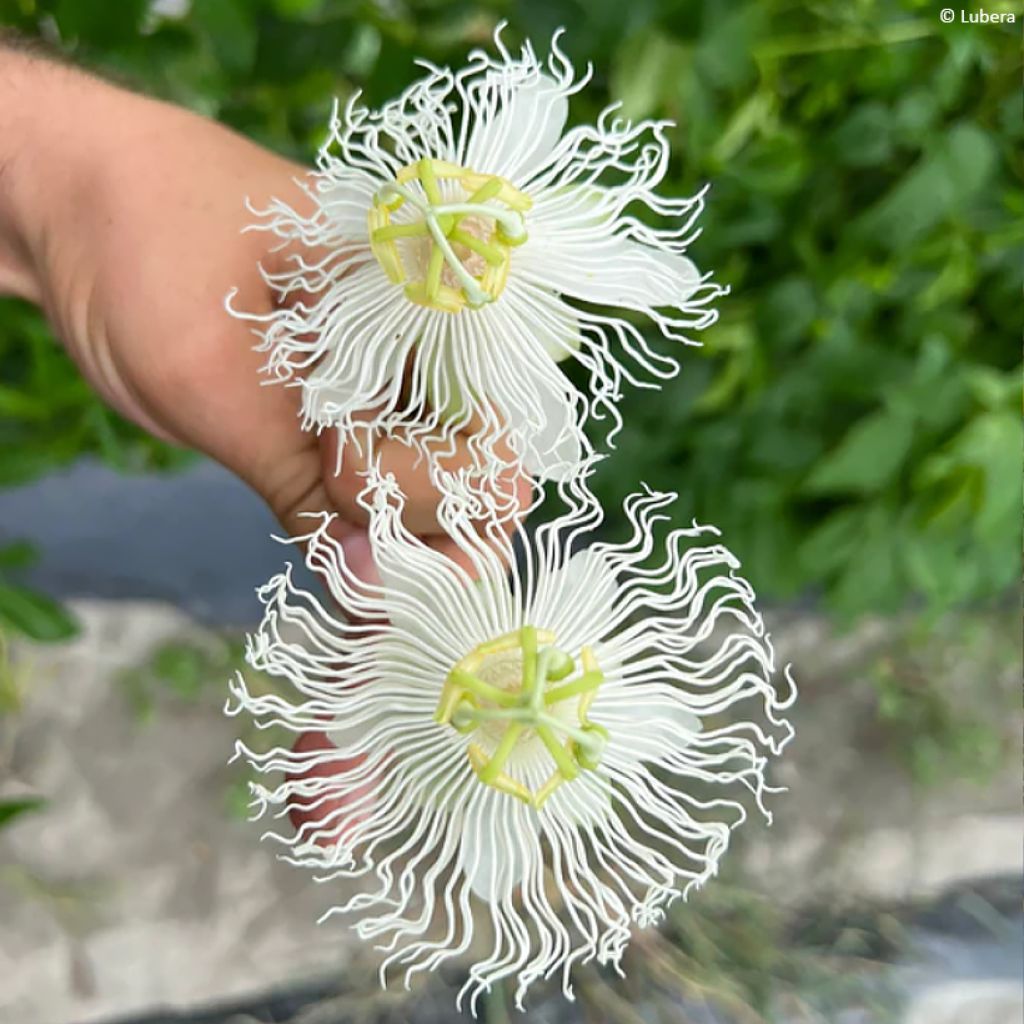

Passiflora incarnata Snowstar - Passion Flower
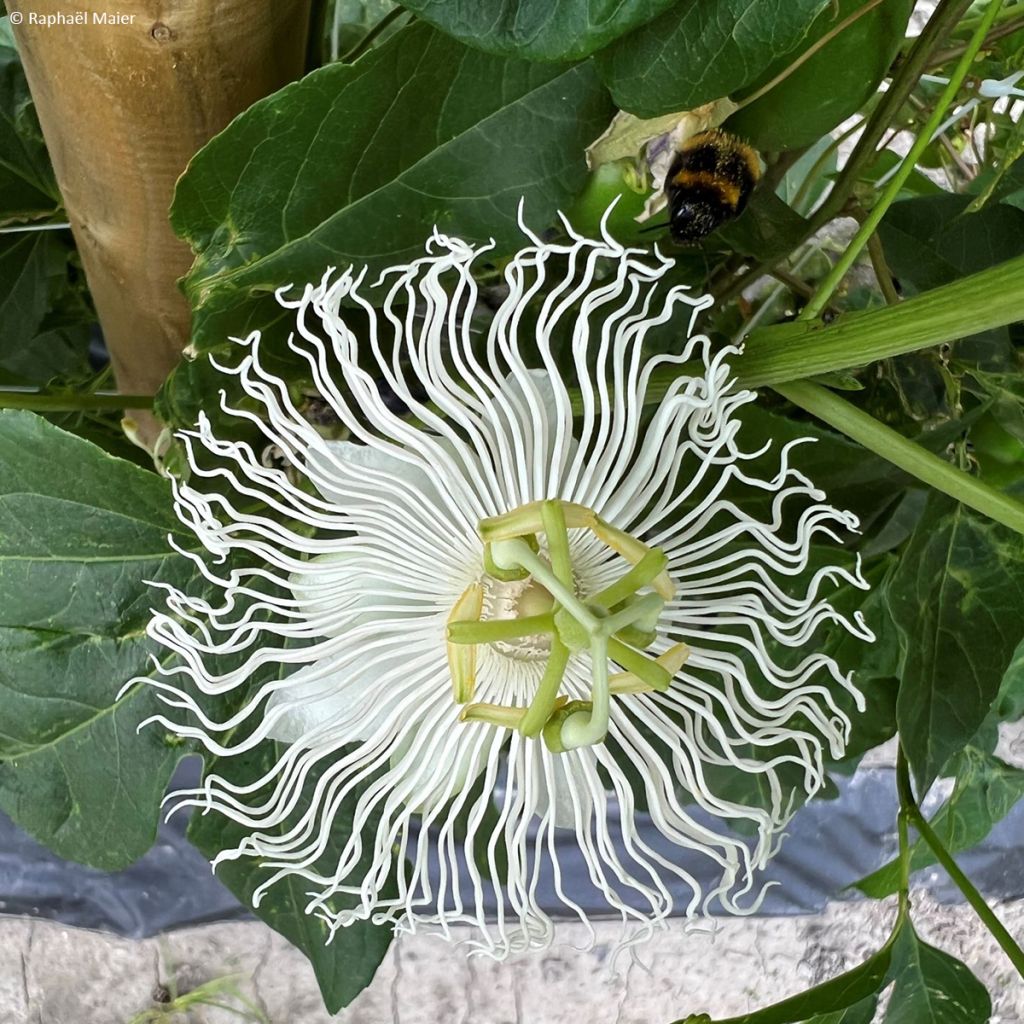

Passiflora incarnata Snowstar - Passion Flower
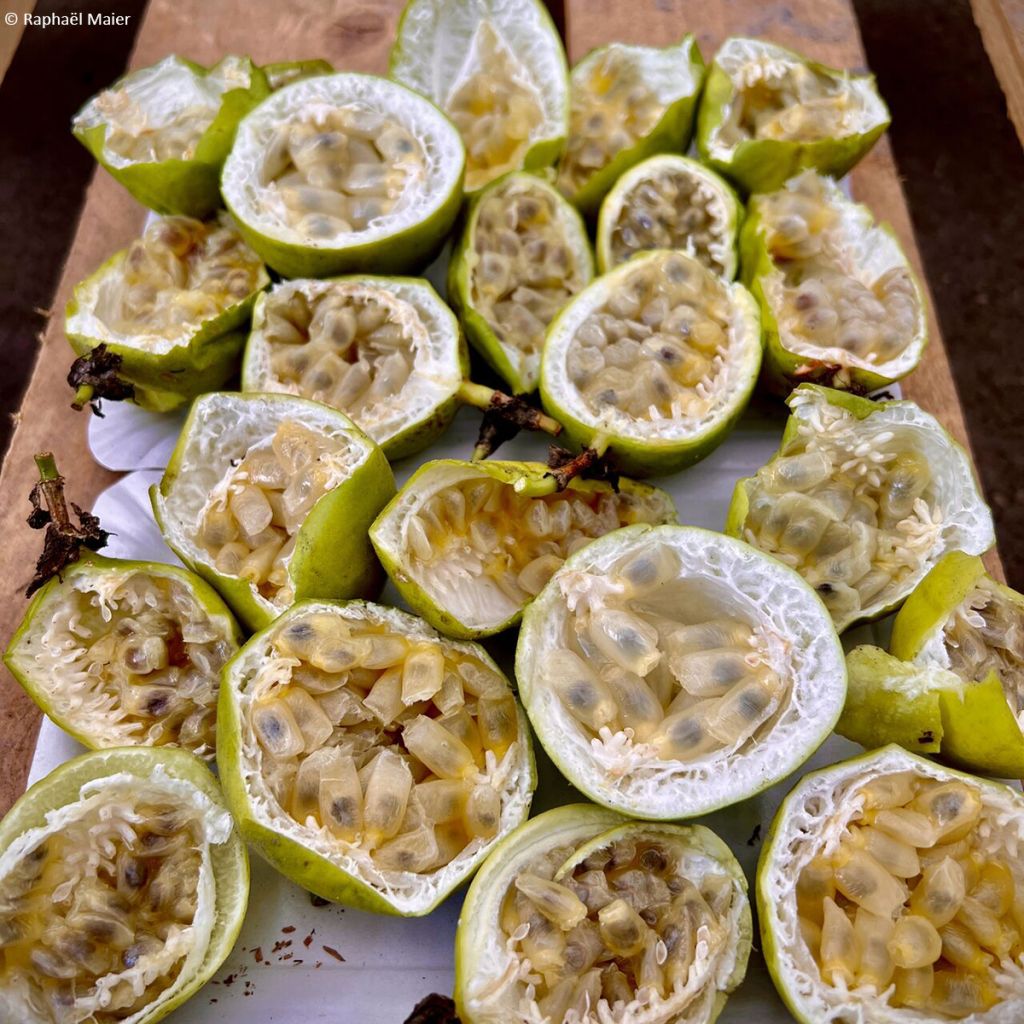

Passiflora incarnata Snowstar - Passion Flower
Passiflora incarnata Snowstar - Passion Flower
Passiflora (x) incarnata Cooltropics® 'Snowstar®'
Maypop, Purple Passionflower, Wild Apricot, Wild Passion Vine
Why not try an alternative variety in stock?
View all →This plant carries a 6 months recovery warranty
More information
We guarantee the quality of our plants for a full growing cycle, and will replace at our expense any plant that fails to recover under normal climatic and planting conditions.
From €5.90 for pickup delivery and €6.90 for home delivery
Express home delivery from €8.90.
Does this plant fit my garden?
Set up your Plantfit profile →
Description
The 'Snow Star'® Passionflower is a hybrid variety in the line of 'Eia Popeia', which is both decorative, fruitful, and rather hardy. Its vegetation is perennial, like that of Passiflora incarnata, the officinal passionflower, and its fruits are delicious. It is a vigorous climbing plant, with white and fragrant flowers adorned with long filaments. They bloom from early summer to autumn. Pollinated by bees, they transform into fruits the size of a small egg that turn yellow when ripe. Their flavour is identical to that of commercial fruits. Enjoy them with a teaspoon or in a fruit salad. The passionflower needs well-drained soil, not too dry, warmth in summer to flower, and not too wet soil in winter.
Mostly native to tropical areas of South America, passionflowers belong to the large family of Passifloraceae, which includes 400 species and numerous spontaneous or horticultural hybrids. Passiflora incarnata is a wild species native to the southeastern United States and Mexico. The Cooltropics® 'Snowstar'® hybrid variety was born in a Swiss nursery.
This 'Snow Star' passionflower has a perennial stump that produces new voluble stems every spring, quite late, between late May and early June. The above-ground vegetation disappears completely in winter. The well-branched stems cling to their support with tendrils, reaching a height of 3 or 4m (10 or 13ft) in a season. These are herbaceous stems that disappear with the first real frosts. They are adorned with glabrous leaves, 8-12cm (3-5in) long by 7-11 cm (3-4in) wide, divided into 3 lanceolate elliptical lobes, thick, with dentate margins, a medium green on the upper side, traversed by pale yellow veins.
The flowering of the 'Snow Star' passionflower extends from June to October in favorable climates. Each stem bears 5 to 10 flowers measuring 8 to 12cm (3 to 5in) in diameter, quite ephemeral, constantly renewing on the plant. Its pleasantly fragrant flowers are formed by slightly greyish white tepals. The filaments of the crown, beautifully frizzed, pure white, extend well beyond the tepals. The centre of the flower is occupied by 5 greenish stamens with yellow anthers and 3 greenish styles, united at the base. The unusual shape of the flower evolves: petals and sepals curve, while the crown of filaments folds and then straightens, to avoid self-pollination. Once pollinated, the flowers give way to edible ovoid fruits, tinged with yellow when ripe, measuring 4-5cm (2in) long. The translucent pulp is sweet, tasty, and fragrant. Fruits will only form on the plant in the presence of another passionflower, through cross-pollination.
This 'Snow Star' Passionflower has a hardy stump down to -12°C (10.4°F), after 2 or 3 years of cultivation. It is very important to protect the stump from cold and humidity during the first two winters. It thrives in all southern and Atlantic regions, also venturing inland in well-protected gardens. This small liana can be used to dress walls, fences, trellises, porches, preferably in combination with an evergreen vine that will provide permanent decoration in winter (Clematis cirrhosa, Hardenbergia violacea, Variegated Ivy). It can also be planted against an evergreen or deciduous hedge, to bring a lot of originality to it in summer. It is also highly appreciated in conservatories where it will withstand very cold winters without damage.
Report an error about the product description
Plant habit
Flowering
Foliage
Botanical data
Passiflora
(x) incarnata
Cooltropics® 'Snowstar®'
Passifloraceae
Maypop, Purple Passionflower, Wild Apricot, Wild Passion Vine
Cultivar or hybrid
Other Passionflowers
Planting and care
The 'Snow Star' passionflower is a sun and heat-loving plant, which should be sheltered from cold, drying winds. Plant it in a deep, well-worked and well-drained soil, rich, rather moist in summer, not too wet in winter. Hardy up to -12°C (10.4°F) by its stump, it will be planted in the ground in the south in the olive tree zone as well as along the entire Atlantic facade of our country. Inland, it is necessary to install it in a protected location, with good winter mulching. Place it on a support to support the weight of vegetation. Direct its branches well onto the support, as the vegetation is exuberant. Pruning before wintering is recommended to maintain reasonable dimensions. Do not hesitate to cut back the main branches to facilitate growth. In early spring, remove dead stems near the stump. In a greenhouse or conservatory, beware of scale insects and whiteflies, as well as the virus, cucumber mosaic. Treat preventively.
Fruits will only form on the plant in the presence of another passionflower, through cross-pollination. They are consumed when barely tinged with yellow.
Planting period
Intended location
Care
This item has not been reviewed yet - be the first to leave a review about it.
Summer flowering climbers
Haven't found what you were looking for?
Hardiness is the lowest winter temperature a plant can endure without suffering serious damage or even dying. However, hardiness is affected by location (a sheltered area, such as a patio), protection (winter cover) and soil type (hardiness is improved by well-drained soil).

Photo Sharing Terms & Conditions
In order to encourage gardeners to interact and share their experiences, Promesse de fleurs offers various media enabling content to be uploaded onto its Site - in particular via the ‘Photo sharing’ module.
The User agrees to refrain from:
- Posting any content that is illegal, prejudicial, insulting, racist, inciteful to hatred, revisionist, contrary to public decency, that infringes on privacy or on the privacy rights of third parties, in particular the publicity rights of persons and goods, intellectual property rights, or the right to privacy.
- Submitting content on behalf of a third party;
- Impersonate the identity of a third party and/or publish any personal information about a third party;
In general, the User undertakes to refrain from any unethical behaviour.
All Content (in particular text, comments, files, images, photos, videos, creative works, etc.), which may be subject to property or intellectual property rights, image or other private rights, shall remain the property of the User, subject to the limited rights granted by the terms of the licence granted by Promesse de fleurs as stated below. Users are at liberty to publish or not to publish such Content on the Site, notably via the ‘Photo Sharing’ facility, and accept that this Content shall be made public and freely accessible, notably on the Internet.
Users further acknowledge, undertake to have ,and guarantee that they hold all necessary rights and permissions to publish such material on the Site, in particular with regard to the legislation in force pertaining to any privacy, property, intellectual property, image, or contractual rights, or rights of any other nature. By publishing such Content on the Site, Users acknowledge accepting full liability as publishers of the Content within the meaning of the law, and grant Promesse de fleurs, free of charge, an inclusive, worldwide licence for the said Content for the entire duration of its publication, including all reproduction, representation, up/downloading, displaying, performing, transmission, and storage rights.
Users also grant permission for their name to be linked to the Content and accept that this link may not always be made available.
By engaging in posting material, Users consent to their Content becoming automatically accessible on the Internet, in particular on other sites and/or blogs and/or web pages of the Promesse de fleurs site, including in particular social pages and the Promesse de fleurs catalogue.
Users may secure the removal of entrusted content free of charge by issuing a simple request via our contact form.
The flowering period indicated on our website applies to countries and regions located in USDA zone 8 (France, the United Kingdom, Ireland, the Netherlands, etc.)
It will vary according to where you live:
- In zones 9 to 10 (Italy, Spain, Greece, etc.), flowering will occur about 2 to 4 weeks earlier.
- In zones 6 to 7 (Germany, Poland, Slovenia, and lower mountainous regions), flowering will be delayed by 2 to 3 weeks.
- In zone 5 (Central Europe, Scandinavia), blooming will be delayed by 3 to 5 weeks.
In temperate climates, pruning of spring-flowering shrubs (forsythia, spireas, etc.) should be done just after flowering.
Pruning of summer-flowering shrubs (Indian Lilac, Perovskia, etc.) can be done in winter or spring.
In cold regions as well as with frost-sensitive plants, avoid pruning too early when severe frosts may still occur.
The planting period indicated on our website applies to countries and regions located in USDA zone 8 (France, United Kingdom, Ireland, Netherlands).
It will vary according to where you live:
- In Mediterranean zones (Marseille, Madrid, Milan, etc.), autumn and winter are the best planting periods.
- In continental zones (Strasbourg, Munich, Vienna, etc.), delay planting by 2 to 3 weeks in spring and bring it forward by 2 to 4 weeks in autumn.
- In mountainous regions (the Alps, Pyrenees, Carpathians, etc.), it is best to plant in late spring (May-June) or late summer (August-September).
The harvesting period indicated on our website applies to countries and regions in USDA zone 8 (France, England, Ireland, the Netherlands).
In colder areas (Scandinavia, Poland, Austria...) fruit and vegetable harvests are likely to be delayed by 3-4 weeks.
In warmer areas (Italy, Spain, Greece, etc.), harvesting will probably take place earlier, depending on weather conditions.
The sowing periods indicated on our website apply to countries and regions within USDA Zone 8 (France, UK, Ireland, Netherlands).
In colder areas (Scandinavia, Poland, Austria...), delay any outdoor sowing by 3-4 weeks, or sow under glass.
In warmer climes (Italy, Spain, Greece, etc.), bring outdoor sowing forward by a few weeks.

































